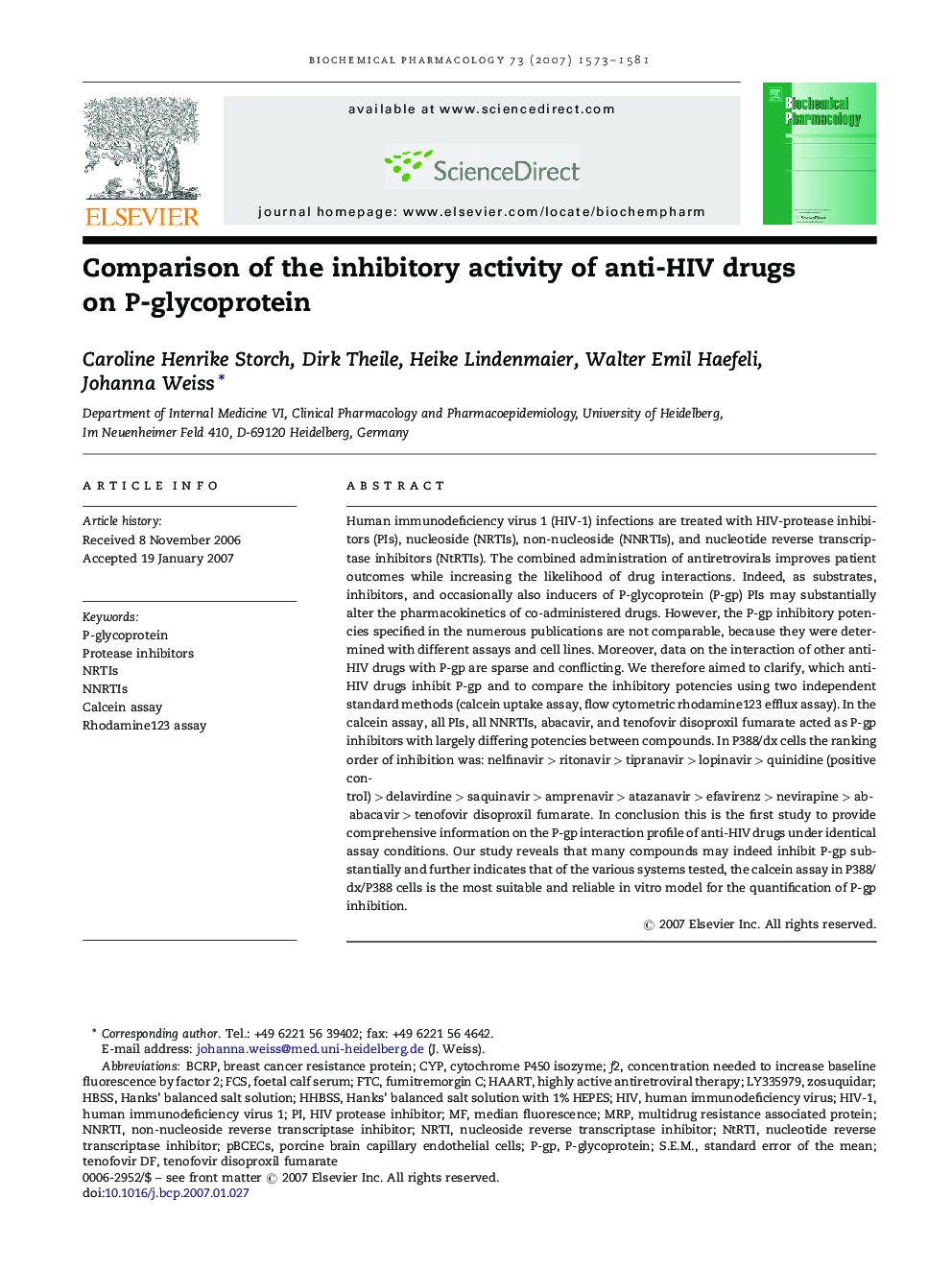| Article ID | Journal | Published Year | Pages | File Type |
|---|---|---|---|---|
| 2515661 | Biochemical Pharmacology | 2007 | 9 Pages |
Human immunodeficiency virus 1 (HIV-1) infections are treated with HIV-protease inhibitors (PIs), nucleoside (NRTIs), non-nucleoside (NNRTIs), and nucleotide reverse transcriptase inhibitors (NtRTIs). The combined administration of antiretrovirals improves patient outcomes while increasing the likelihood of drug interactions. Indeed, as substrates, inhibitors, and occasionally also inducers of P-glycoprotein (P-gp) PIs may substantially alter the pharmacokinetics of co-administered drugs. However, the P-gp inhibitory potencies specified in the numerous publications are not comparable, because they were determined with different assays and cell lines. Moreover, data on the interaction of other anti-HIV drugs with P-gp are sparse and conflicting. We therefore aimed to clarify, which anti-HIV drugs inhibit P-gp and to compare the inhibitory potencies using two independent standard methods (calcein uptake assay, flow cytometric rhodamine123 efflux assay). In the calcein assay, all PIs, all NNRTIs, abacavir, and tenofovir disoproxil fumarate acted as P-gp inhibitors with largely differing potencies between compounds. In P388/dx cells the ranking order of inhibition was: nelfinavir > ritonavir > tipranavir > lopinavir > quinidine (positive control) > delavirdine > saquinavir > amprenavir > atazanavir > efavirenz > nevirapine > abacavir > tenofovir disoproxil fumarate. In conclusion this is the first study to provide comprehensive information on the P-gp interaction profile of anti-HIV drugs under identical assay conditions. Our study reveals that many compounds may indeed inhibit P-gp substantially and further indicates that of the various systems tested, the calcein assay in P388/dx/P388 cells is the most suitable and reliable in vitro model for the quantification of P-gp inhibition.
